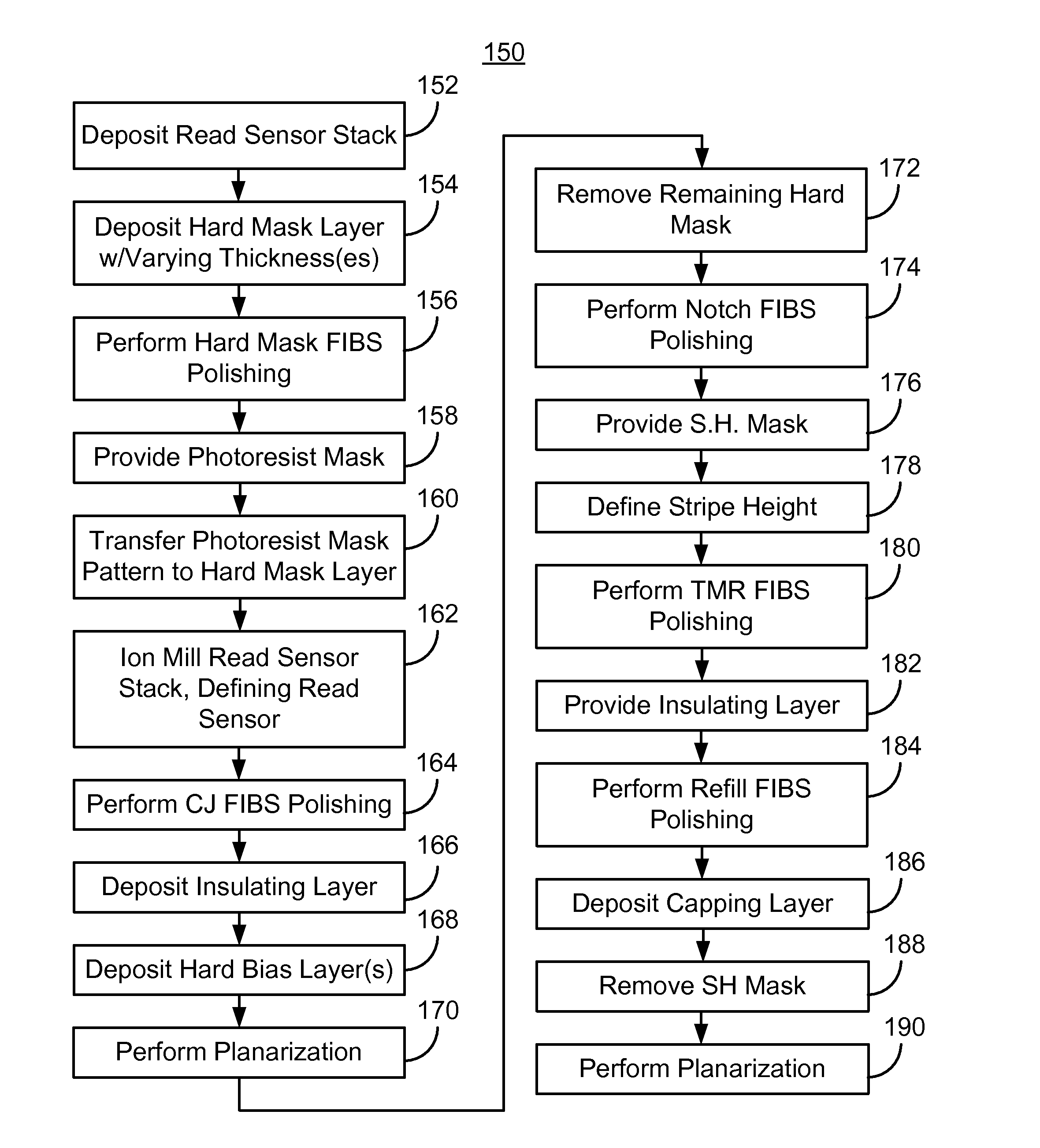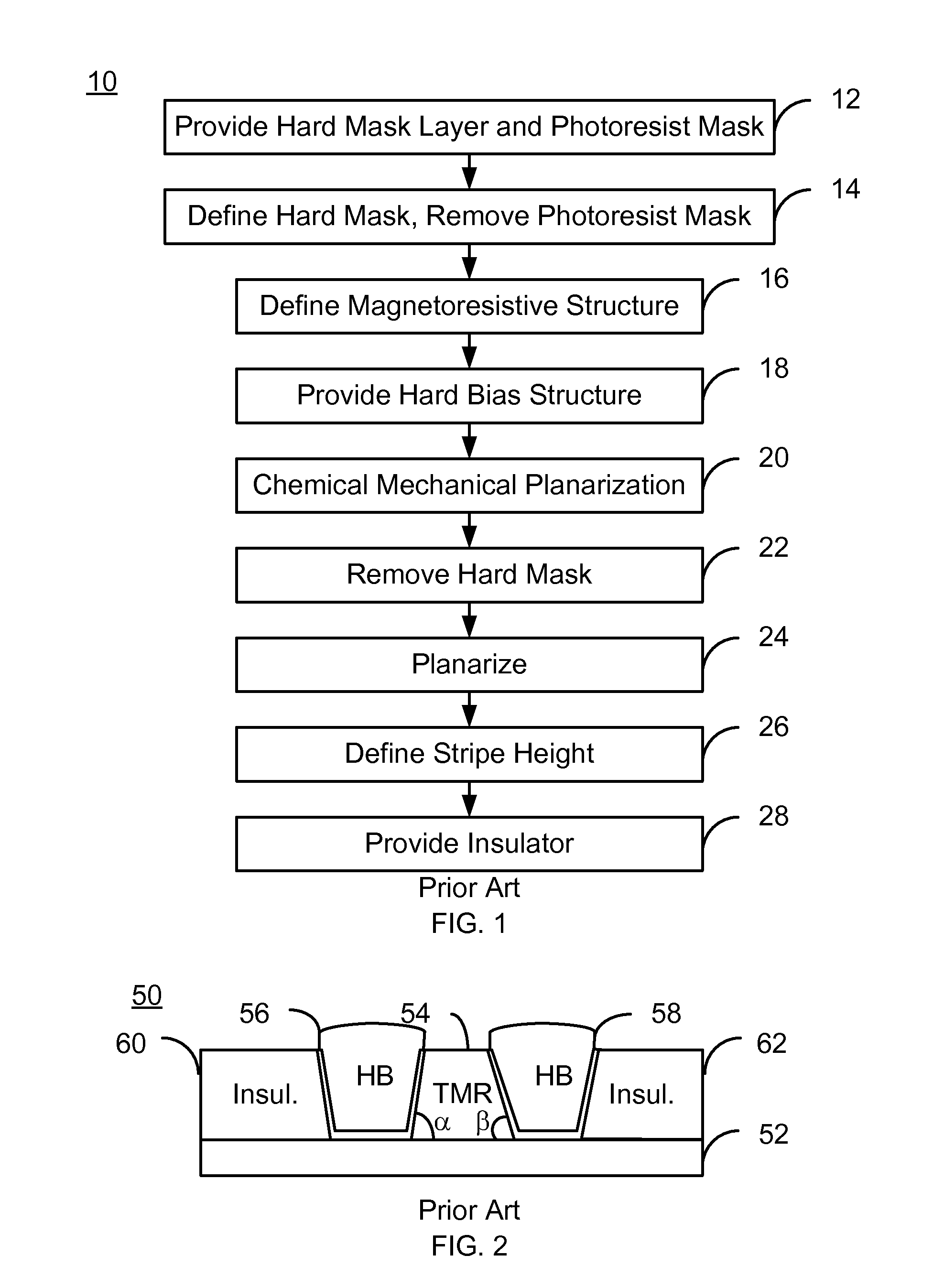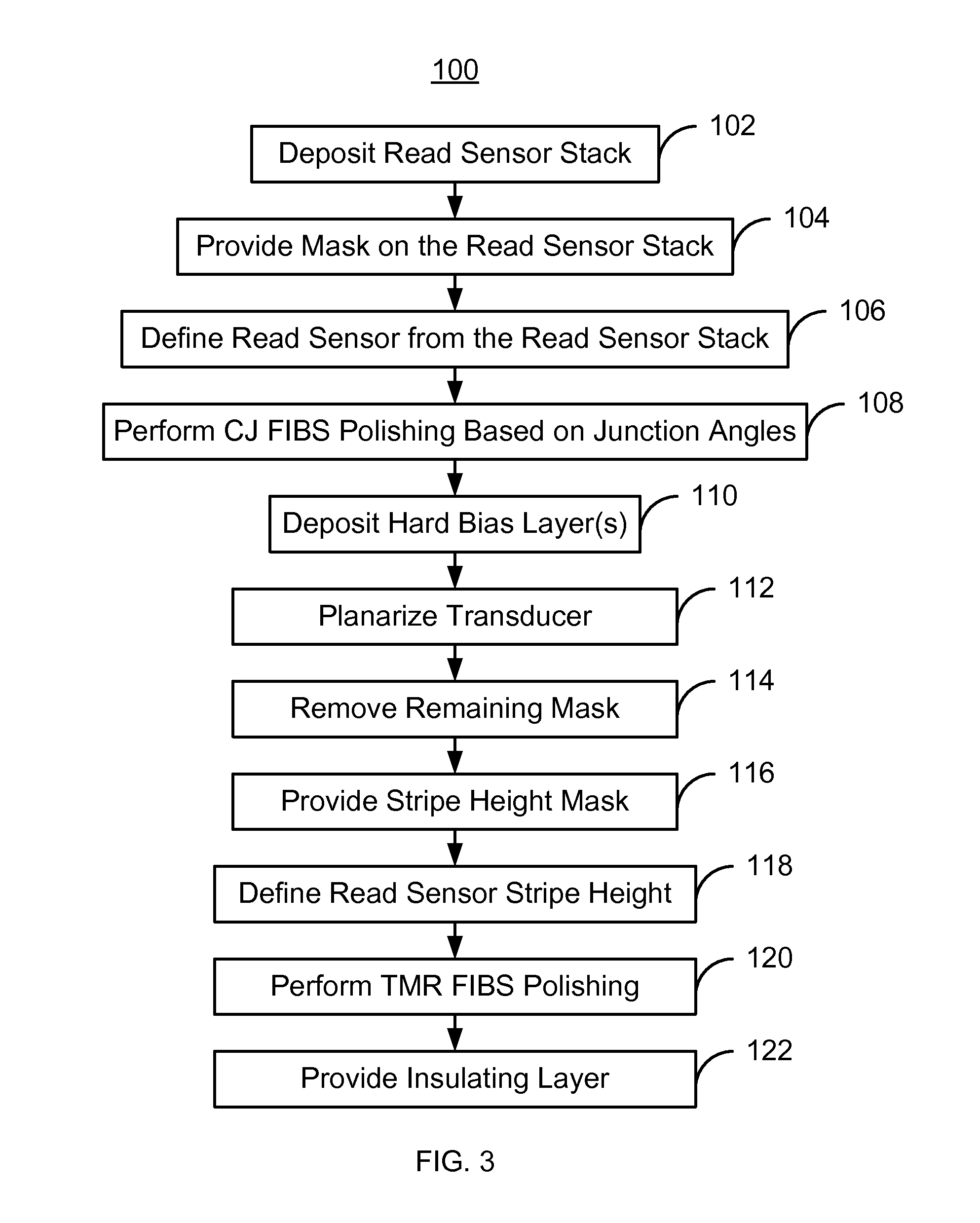Method and system for providing a read sensor in a magnetic recording transducer using focused ion beam scan polishing
a technology of magnetic recording transducer and read sensor, which is applied in the manufacture of flux-sensitive heads, instruments, record information storage, etc., can solve the problems of underlying metal layer corrosion and typical difficulty in controlling the cmps performed
- Summary
- Abstract
- Description
- Claims
- Application Information
AI Technical Summary
Benefits of technology
Problems solved by technology
Method used
Image
Examples
Embodiment Construction
[0020]FIG. 3 is an exemplary embodiment of a method 100 for providing magnetic recording transducer. For simplicity, some steps may be omitted. The method 100 is also described in the context of providing a single recording transducer. However, the method 100 may be used to fabricate multiple transducers at substantially the same time. The method 100 is also described in the context of particular layers. A particular layer may include multiple materials and / or multiple sub-layers. The method 100 also may start after formation of other portions of the magnetic recording transducer. For example, the method 100 may start after layers underlying the magnetoresistive sensor, such as a tunneling magnetoresistive (TMR) sensor have been fabricated.
[0021]A read sensor stack is deposited on the substrate, via step 102. The magnetoresistive layers may include a pinning layer, a pinned layer, a nonmagnetic spacer layer, and a free layer. In addition, seed and / or capping layers may be used. The ...
PUM
| Property | Measurement | Unit |
|---|---|---|
| Thickness | aaaaa | aaaaa |
| Angle | aaaaa | aaaaa |
| Height | aaaaa | aaaaa |
Abstract
Description
Claims
Application Information
 Login to View More
Login to View More - R&D
- Intellectual Property
- Life Sciences
- Materials
- Tech Scout
- Unparalleled Data Quality
- Higher Quality Content
- 60% Fewer Hallucinations
Browse by: Latest US Patents, China's latest patents, Technical Efficacy Thesaurus, Application Domain, Technology Topic, Popular Technical Reports.
© 2025 PatSnap. All rights reserved.Legal|Privacy policy|Modern Slavery Act Transparency Statement|Sitemap|About US| Contact US: help@patsnap.com



